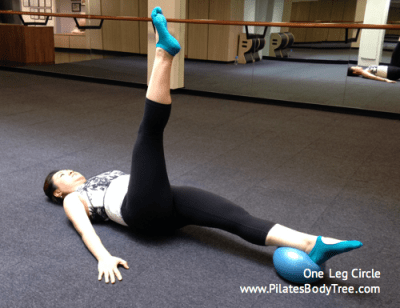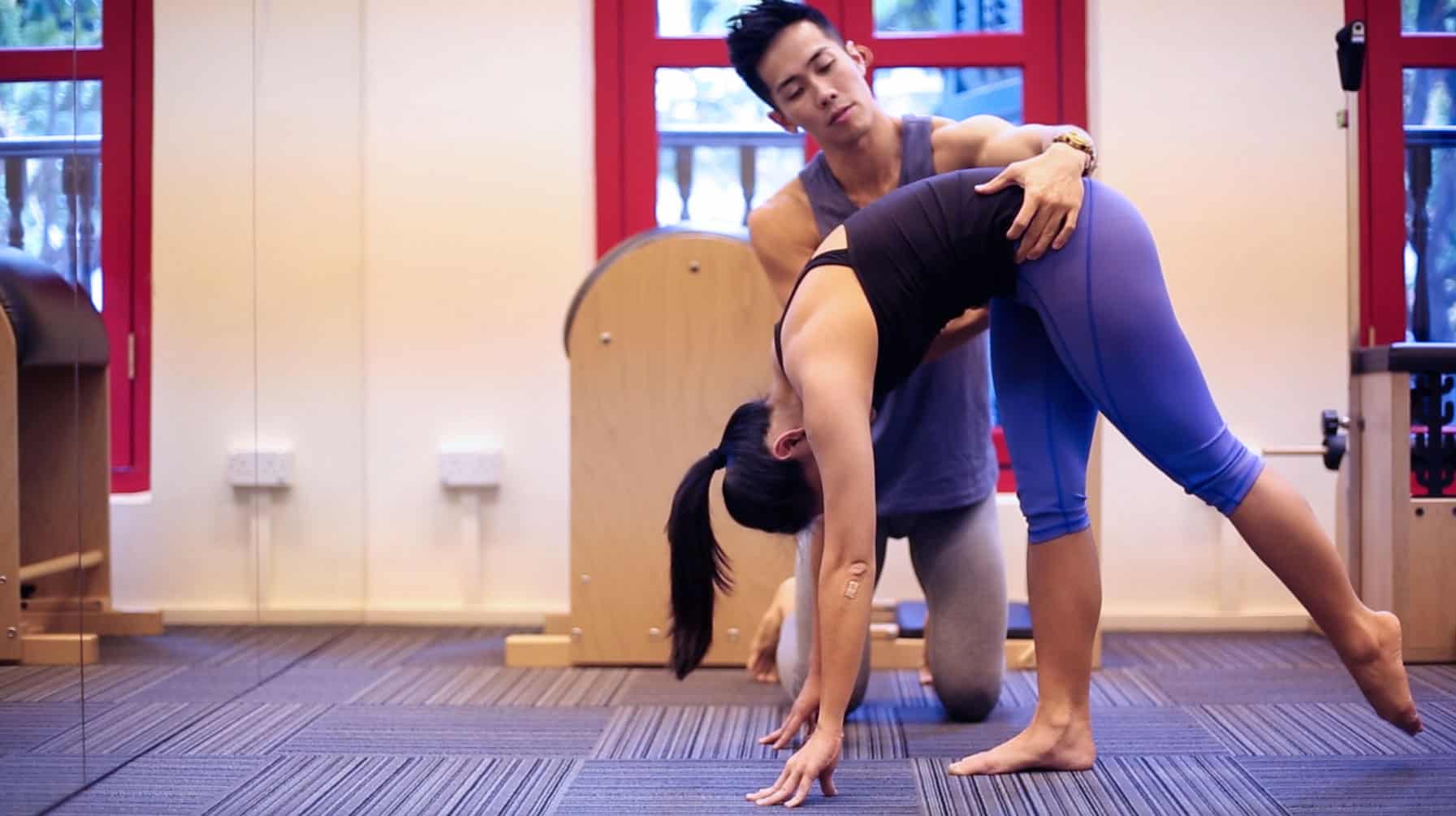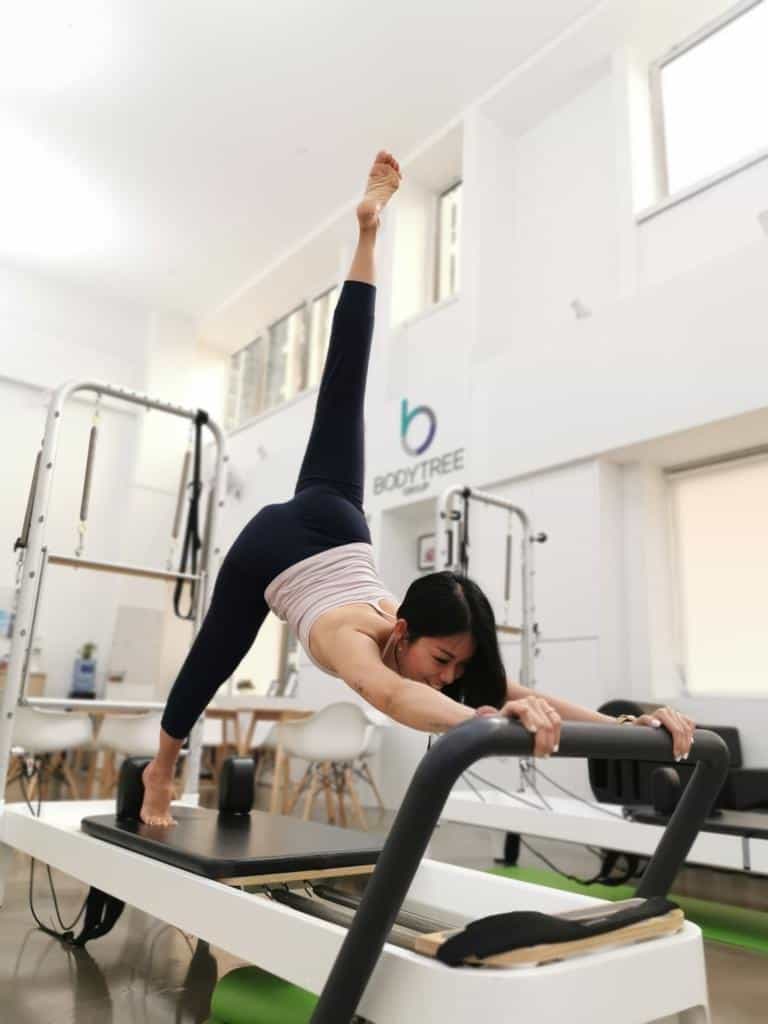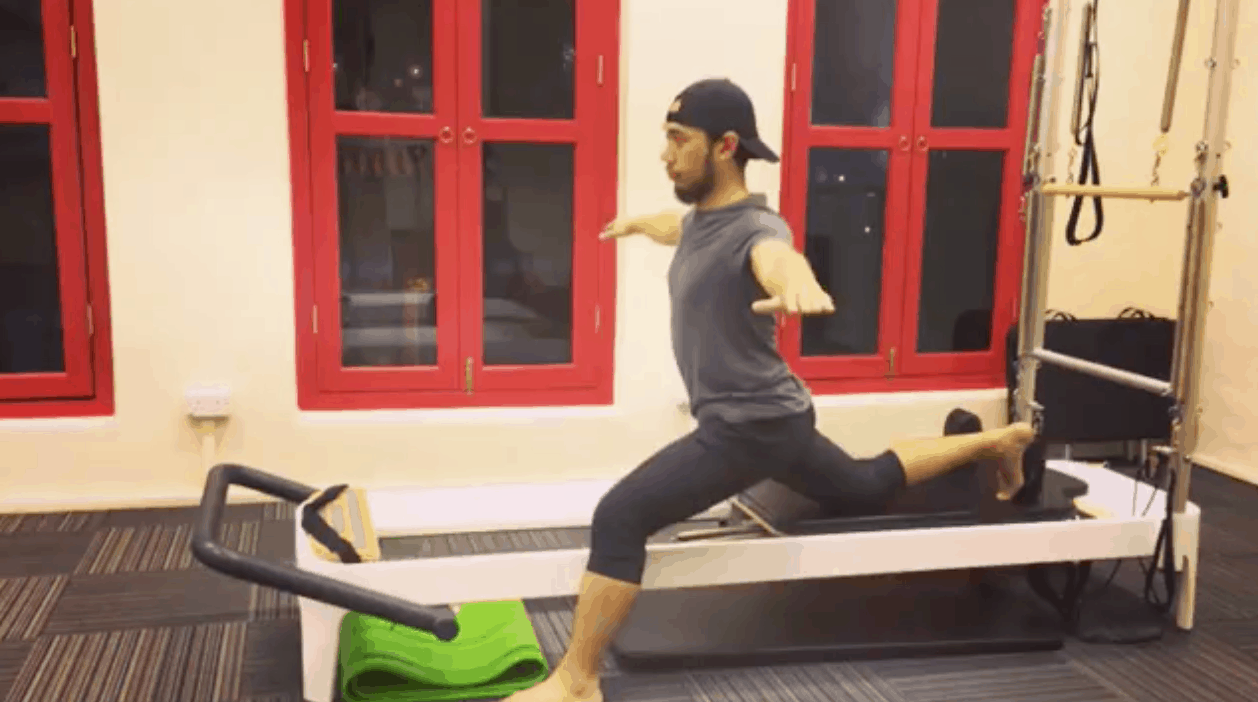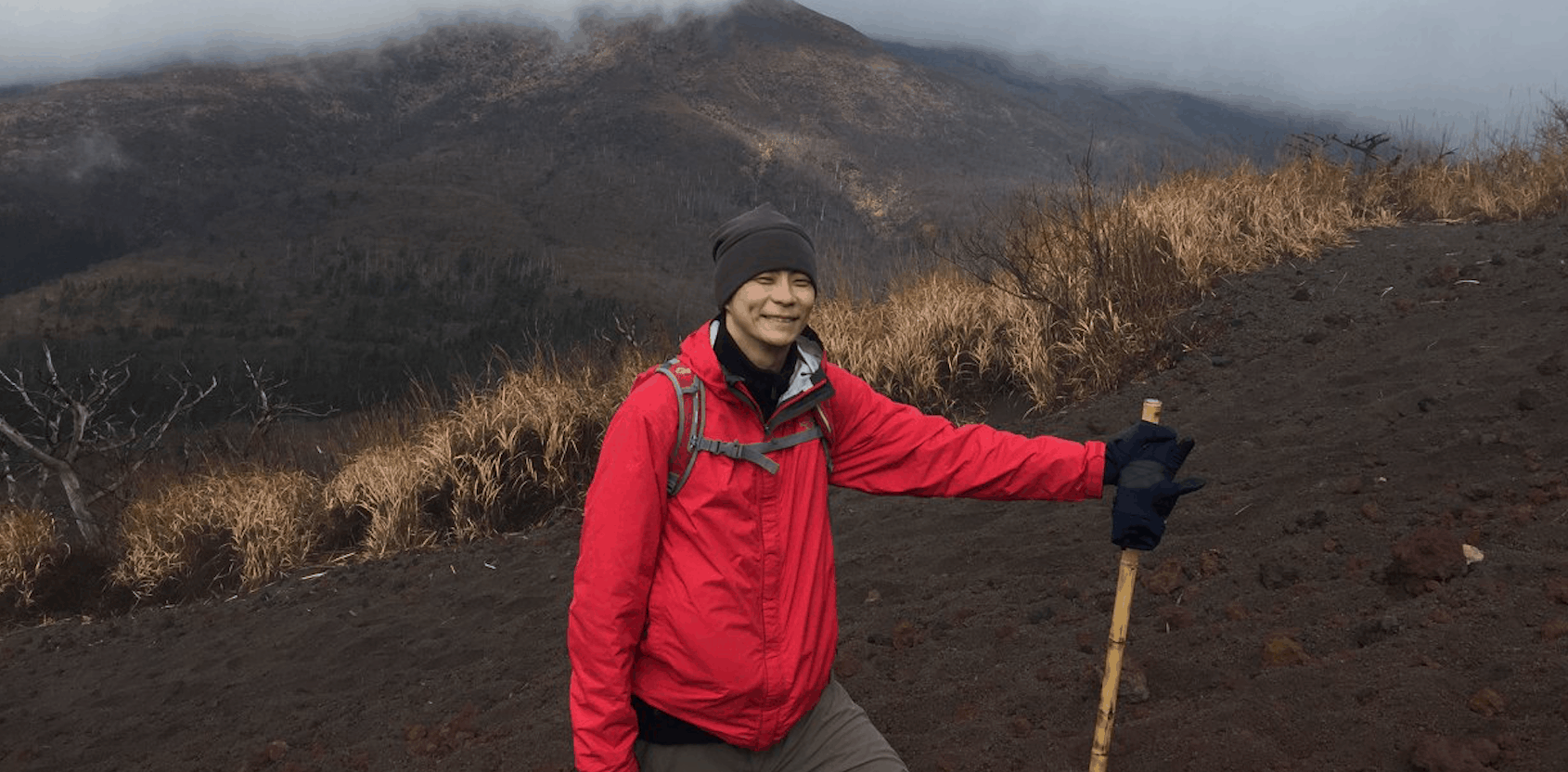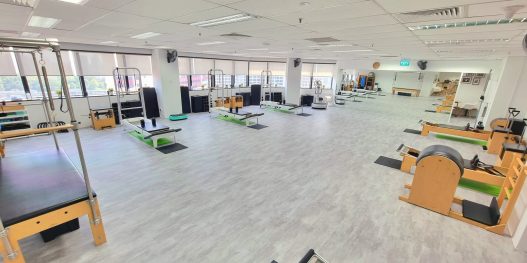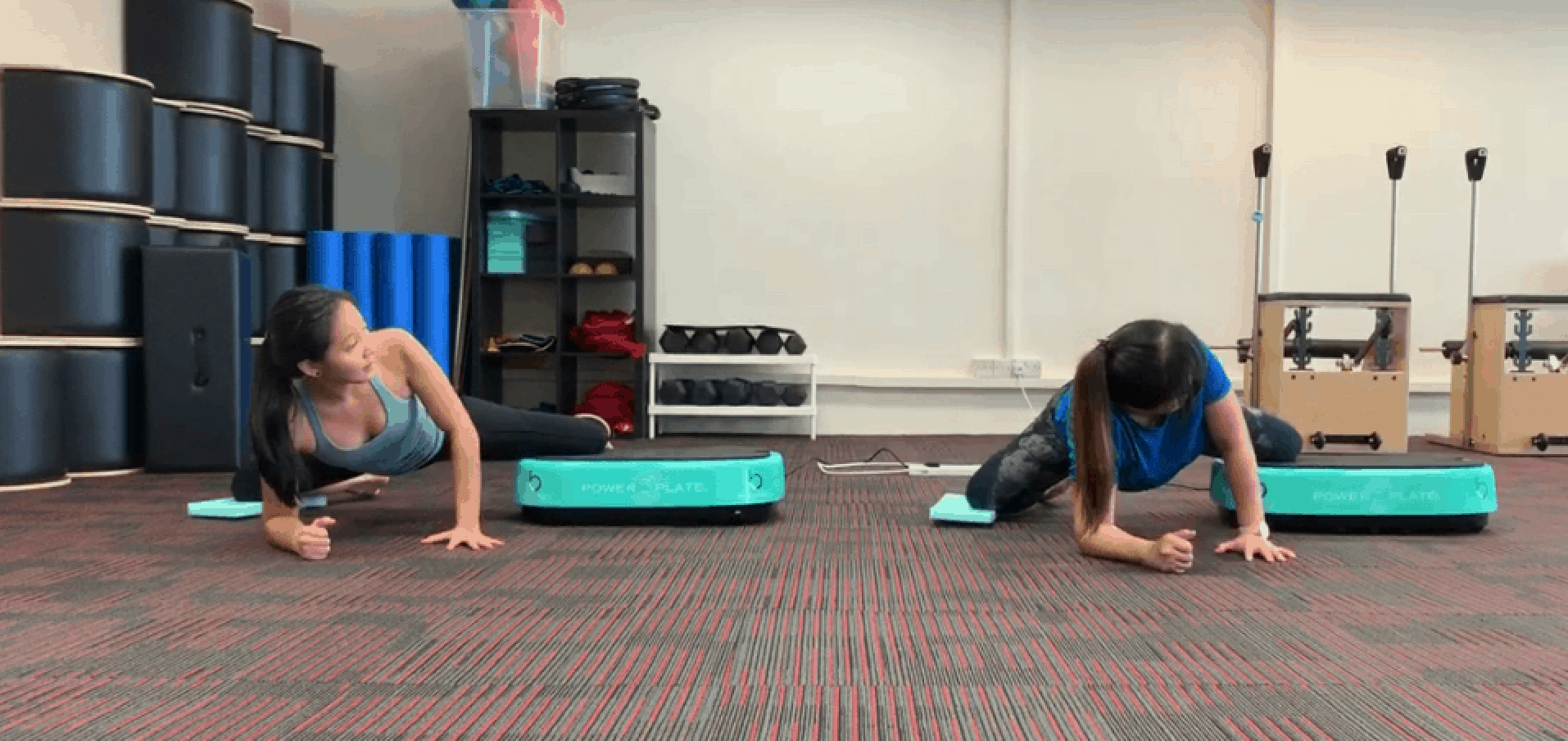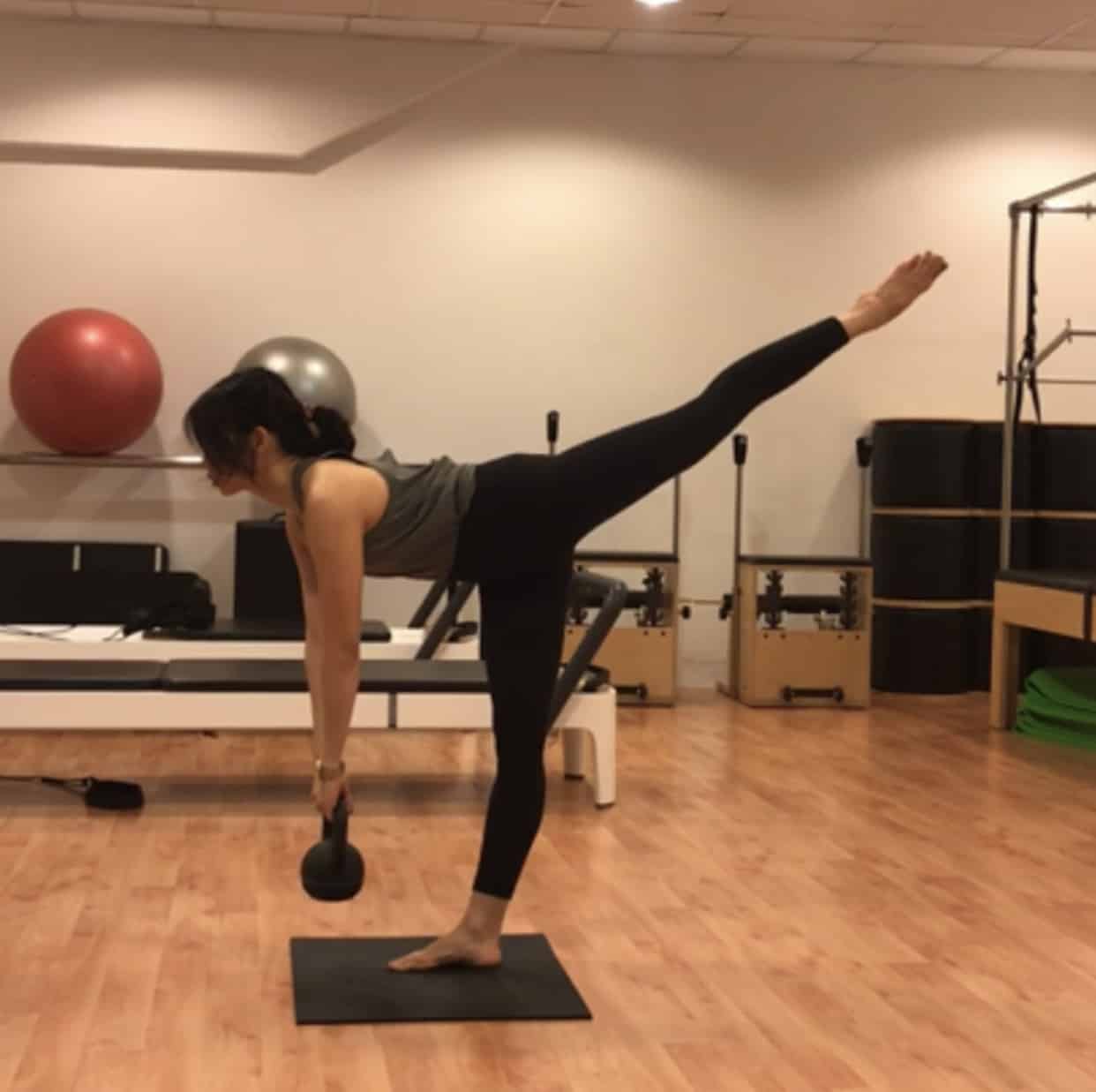At Pilates BodyTree, we offer a group class called Roller and Ball class. Common questions are “What is this class?” and “What would I be doing in this class?”
This class uses three apparatuses, namely the Swiss Ball, small Pilates ball and foam roller – usually individually within a class, primarily to challenge the balance and proprioception of the students.
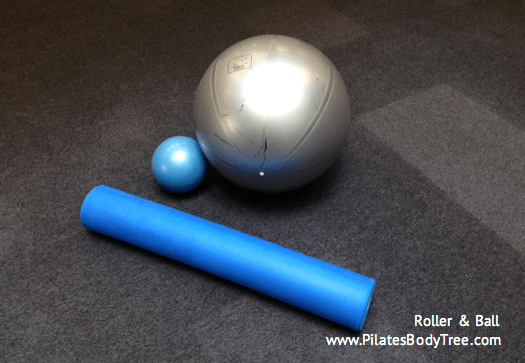
- BALANCE
When we think about balance, we tend to think about being able to stand on one leg and not fall. Balance in Pilates is a broader concept – it is about balanced muscles. Is your right side of the spine tighter than your left? Is your right hand stronger than your left?
I remember when I started Pilates, when practicing Rolling Like a Ball on the Mat, I kept rolling to my right! That is a sign of imbalance.
Swiss balls are used in a number of movements to challenge this imbalance yet provide support to work through the imbalance. Take for example the exercise Superman.
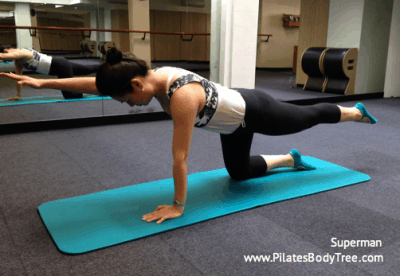
When done without the Swiss ball, some students find it hard to maintain the position, as their backs may hurt. This is due to a lack of endurance of the abdominals to hold the spine in place.
With the Swiss ball, the spine is supported and hence the student can stay longer to work on the imbalances.
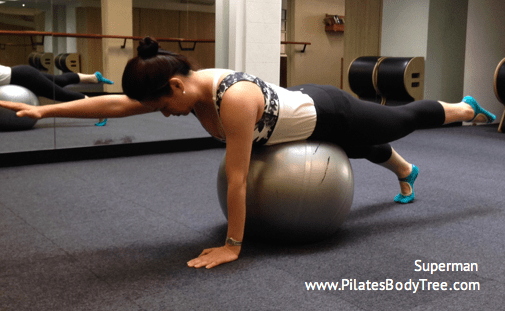
The Swiss ball provides an additional challenge – you cannot lean to one side, or else you can’t stay on the ball! It forces you to keep your alignment. This movement on Swiss ball is more accessible for someone with a knee problem, who can’t kneel for too long.
2. PROPRIOCEPTION
There are organs within our muscles that help us sense the relative position of neighboring parts of our bodies and the strength of effort being employed in movement. Even when we are blindfolded, we can sense if our arms are above our heads or hanging by the side.
However, most of us – due to lack of activities and being stuck in fixed movements for many years, have underdeveloped this proprioception throughout all parts of our body. This is a possible cause of why older people tend to fall, apart from weak muscles.
When working with the Swiss ball or foam roller, because they are not stable surfaces, will evoke a lot more awareness and muscle recruitment to keep stable while going through the movements. Look at the Pelvic Press done on the Mat and done with feet on the foam roller.

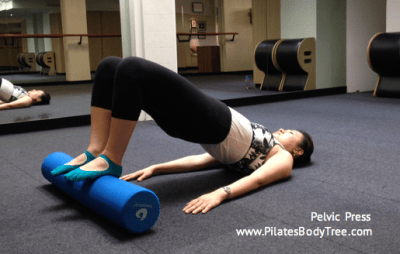
It is more challenging with feet on the foam roller. The muscles have to work harder to keep the roller stable. It raises awareness as to whether you are working harder with your right or your left side.
3. TACTILE FEEDBACK
When working with apparatus like the small ball or foam roller, they provide very good tactile feedback. Doing the Pelvic Press on the foam roller; some students will roll their feet out in the attempt to keep the roller stable. Students will immediately appreciate their imbalances when asked to keep their feet flat on the foam roller.
The same Pelvic Press can be done with the spine on the foam roller.
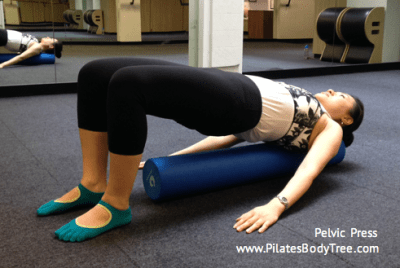
In this case, it gives very good feedback when lowering the spine down, i.e. whether you can lower the spine down one bone at a time, articulating the spine.
Another example is Hip and Abdominal work on the small ball:
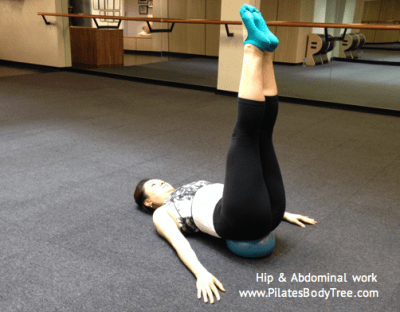
You will need control in your abdominals and hips to keep the pelvis on top of the ball, while doing this movement.
4. VARIETY & FUN
Our body thrives on a variety of movements. So if you have been doing Pilates Matwork for a while, it might invigorate your practice when you add Roller and Ball classes to your schedule. See the One Leg Circle:
It is challenging to keep one leg on the ball and a lot of fun as your body figures out how to become more stable!

